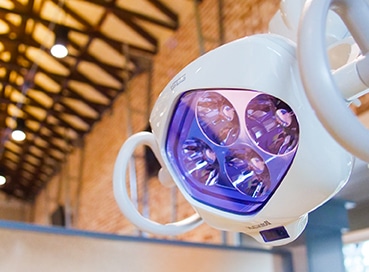Little Known Questions About Orthodontics.
Little Known Questions About Orthodontics.
Blog Article
Orthodontics Things To Know Before You Buy
Table of ContentsOrthodontics for DummiesAll about OrthodonticsThe Of OrthodonticsThings about OrthodonticsThe smart Trick of Orthodontics That Nobody is DiscussingWhat Does Orthodontics Do?Things about Orthodontics
You might feel some pain for some time when your dental braces are first put on and when they are adjusted (Orthodontics). It will certainly take a little time to obtain used to your dental braces and they can bother your lips and cheeks. If this happens, a relief wax can be used to your dental bracesIt is vital to brush your braces as well as the front, back and chewing surface areas of the teeth. Your dentist or orthodontist will certainly offer you pointers on just how to brush and on how to floss making use of floss threaders. After flossing, roll it up in a little sphere and put it in the trash.
Some Of Orthodontics
Parents must oversee their youngsters to make certain they do an excellent work cleansing their teeth and dental braces and adhere to the recommendations of their dental professional or orthodontist. If you have dental braces, do not attack on tough points such as ice and nuts. Do not chew completions of pens or pencils.
It guides the instructions of tooth motion and jaw development in a person who is still growing. There are various types of headwear and they might be used during any kind of part of the orthodontic therapy. Your orthodontist or dental practitioner will reveal you how to place on the headwear and inform you the length of time to wear it each day.
What Does Orthodontics Do?
They may need to be put on regularly or part of the time. Tooth removal might be needed if your teeth are crowded or if a tooth is badly out of position. Jaw surgical treatment (or orthognathic surgical treatment) may be needed when there are major distinctions in the dimension or placement of the upper and lower jaws.
An orthodontist is a dentist trained to detect, protect against, and treat teeth and jaw abnormalities. Orthodontists work with people of all ages, from children to grownups.
Orthodontic residency programs provide intensive, concentrated instruction for oral specialists. They concentrate on two areas: Exactly how to effectively and safely relocate teeth Exactly how to effectively guide development in the teeth, jaw, and faceOnce an orthodontist has finished training, they have the option to become board certified.
Orthodontics - The Facts
Imbalance, or malocclusion, is one of the most usual factor people see an orthodontist. It is genetic and is the result of size differences in between the upper and lower jaw or in between the jaw and teeth. Malocclusion results in tooth overcrowding, a twisted jaw, or uneven bite patterns. Orthodontics. Malocclusion is generally treated with: Your orthodontist connects steel, ceramic, or plastic square bonds to your teeth.
If you have just small malocclusion, you might be able to utilize clear braces, called aligners, instead of conventional dental braces. Some individuals need a headwear to assist relocate teeth right into line with stress from outside the mouth. After braces or aligners, you'll require to wear a retainer. A retainer is a custom gadget that maintains your teeth in position.
They can create extra area in the mouth without having to pull teeth. If you have a severe underbite or overbite, you could require orthognathic surgical treatment (likewise called orthodontic surgical procedure) to extend or shorten your jaw.
Getting My Orthodontics To Work
During your first orthodontic appointment, you'll likely have: A dental examPhotos taken of your face and smileDental X-raysPanoramic (360 degree) X-rays of your face and headImpressions to produce molds of your teethThese Continue tests will certainly aid your orthodontist recognize just how to wage your therapy. An orthodontist is a dentist who's had training to treat your teeth and jaw.
Orthodontists may execute surgical procedure, exams,X-rays,and even more to help you acquire a much more comfortable, much healthier smile. An orthodontist is concentrated on your bite, so something like a chipped tooth would certainly be managed by a dental professional. Orthodontists are dental professionals yet not all dental experts are orthodontists. Orthodontists are concentrated on your bite, or the means your teeth meshed, and the straightness of your teeth.
What Does Orthodontics Do?

Orthodontic therapy is recognized for its capacity to transform smiles, yet its benefits expand past mere looks. Some of these advantages are: you can check here One of the considerable orthodontic devices is that it initiates a transformative procedure past tooth placement.
8 Simple Techniques For Orthodontics
Precise placement reduces the tendency for teeth to change or relapse post-procedure. Orthodontic therapy has actually developed dramatically, providing a range of therapy modalities tailored to specific demands and preferences.
These modifications are crucial for preserving progression and guaranteeing the therapy remains on track according to the established plan. The orthodontist establishes a personalized procedure plan based upon the analysis official source documents and the patient's special demands and choices. This plan details the recommended activity to resolve the determined orthodontic concerns and achieve the preferred end result.
Report this page